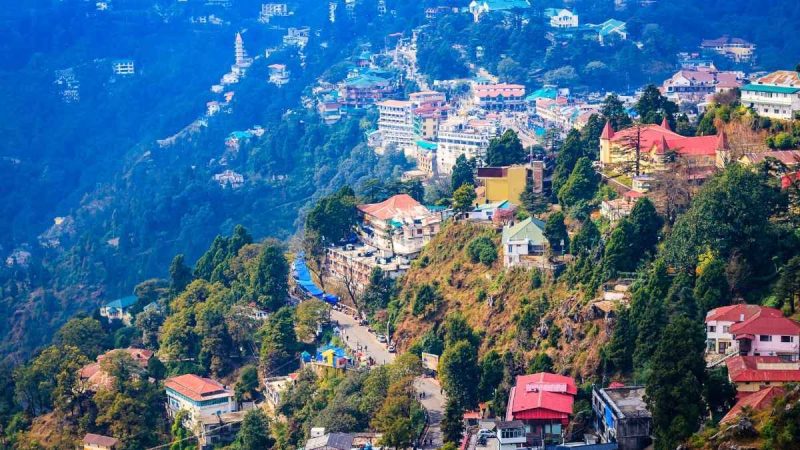Mussoorie is one of Uttarakhand’s most loved hill stations, charming everyone with its breathtaking mountain views, lush greenery, and calming atmosphere. But is this place still safe for tourists and locals? Mussoorie is now facing a serious problem—its land is becoming unstable, with nearly 15% of its region prone to landslides.
Mussoorie Shows Signs Of Landslide
A new study by the Wadia Institute of Himalayan Geology (WIHG) in Dehradun has raised serious concerns about Mussoorie. Scientists discovered that nearly 15% of Mussoorie and its nearby areas fall under the ‘high-risk landslide zone.’ It is due to unplanned construction, heavy road cutting, and deforestation, reported The New Indian Express.
Further, scientists studied an 84-square-kilometre area in the Middle Himalayan region and found that many parts of the town are sinking or at risk of slope failure. Which areas are highly affected? The research team identified several well-known spots—Bhattaghat, George Everest, Kempty Fall, Khatta Pani, Library Road, Galogidhar, and Hathipaon—as the most vulnerable. Dr Anil Joshi, who led the study, stated that these areas can no longer cope with the increasing construction and human activity occurring there.
Also Read: Uttarakhand Mandates Tourist Registration In Mussoorie Amid Traffic, Overcrowding Woes
Landslide Danger In Other Parts Of The Hill Station
According to The New Indian Express, the study shows that Mussoorie’s natural structure is a big reason why it’s in constant danger of facing landslides. The town sits on Krol limestone rocks, which are weak, cracked, and unable to bear too much weight. Many slopes are also extremely steep—over 60 degrees—making them more prone to landslides. Scientists revealed that years of unplanned construction, excessive road cutting, and deforestation have made the situation worse in this hill station.
Researchers used modern technologies like Geographic Information System (GIS) and high-resolution satellite imagery to create a detailed Landslide Susceptibility Map (LSM). They studied factors such as rock type, land use, slope, and drainage patterns. The results show that 56% of the region is in the low-risk category, 29% falls under moderate risk, and 15% under high risk.
We hope Mussoorie’s condition improves soon and that this beautiful hill station once again becomes a safe and peaceful place for both tourists and locals.
Cover Image Courtesy: Canva Pro/ Rajatk (Representative Image)

